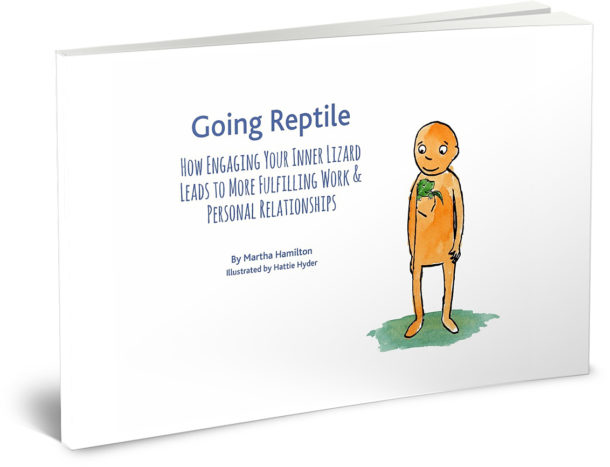TAMING YOUR INNER LIZARD
You know the feeling… something happens at home, at work, or in a social situation that triggers the “reptile” inside you. Your reptilian brain takes over and you say or do something that you regret and that makes things worse. When we “go reptile” (also known as “losing it), we enter into automatic reactive mode. We’re designed that way to consolidate our resources for safety. If a situation is life threatening, this makes sense. However, at the office or at home, the result can be considerably less optimal.
The good news is that there’s another way: a more advanced operating system that can come online once we learn how to engage it. This quick-read book is packed with practical information on how to engage and strengthen this new way of being, effectively sidestepping the older reactive system.

Order Now
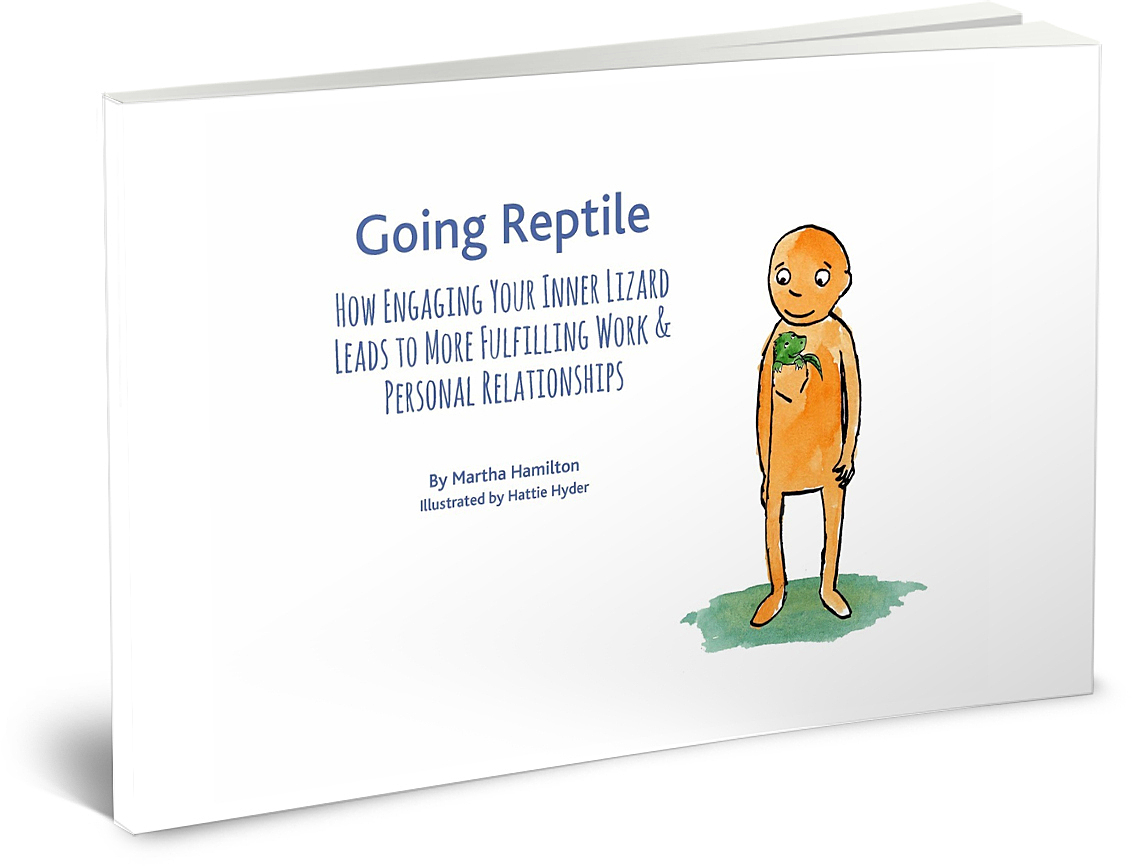
“Throughout this seemingly simple book, Hamilton makes a nuanced human dynamic clear and actionable. Having this framework has supported my contributions to developing an organizational culture that has received many accolades of being ‘special’ and ‘extraordinary’. I wish for all of us the opportunity to live, work, and play in such Full-on Human environments. Understanding and navigating our own contributions to nurturing such environments has tremendous impact.”
“Getting a handle on our reactivity is essential to our own well-being and to the functioning of our personal and business relationships. It is a problem, however, that we tend to get, well, reactive, in approaching the subject, personally. In Going Reptile, Martha Hamilton provides a light, even whimsical, approach that is quite disarming and supports us in really being able to feel safe observing and intervening in our own reactivity so as to find more equilibrium and well-being. I recommend it highly!”
GETTING TO KNOW YOUR REPTILE(S)
Each of us has our own unique set of Reptilian Styles that show up in different ways depending on the situation. You’ll have your styles and others theirs. These styles—these ways of reacting—are unconsciously established responses intended to cushion us from threats, and they’ve become Reptilian habits. There are four general styles—fight, flight, freeze, fawn. Explore them below and see if they sound familiar:
The Fight Styles
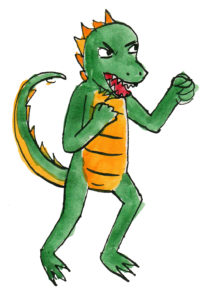
When someone acts out a Fight Style, either as a longstanding pattern or in response to a specific situation, they are creating a feeling of safety for themselves by using power and control. Their anger, blame, or aggression can be disguised or obvious.
A Fight Style might show up as:
- A compulsion to take charge
- Condescension
- Contempt presented with polish
The Freeze Styles
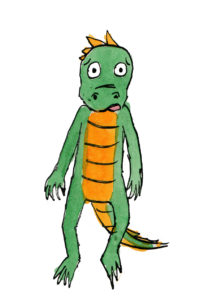
It may be hard to detect a Reptilian Freeze Style from the outside, but inside a person is going through (or trying to avoid) stages of shutdown. In its extreme, the feeling is like being left speechless by an occurrence that stops you in your tracks, frozen and foggy. From the outside, you don’t see the feeling of the deer in the headlights because the person continues to function, maybe even well. The “uh-oh” experience is hidden by:
- A drive to be seen as a success
- Being seen as right and good
- Maintaining a sense of calm
The Flight Styles
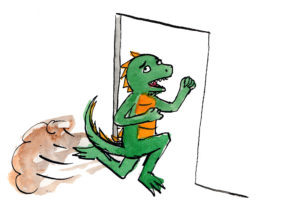
The Flight Styles are styles of withdrawal. Withdrawal can take multiple forms, from intellectual and emotional detachment to physically going away, all in order to avoid the feeling of threat. When these styles are active, a person attempts to hold off the perceived threat by:
- Avoiding responsibility altogether
- Overplanning to avoid problems
- Filling the scene with brilliance and knowledge that can’t be challenged
The Fawn Styles
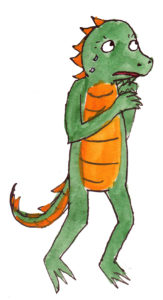
A Fawn response can be a subtle or blatant demand to be seen as worthy, special, or needed. People showing these styles will work to have it communicated to them that they are okay. A Fawn response can show up in a more aggressive way, as a kind of entitlement, or show up in highly submissive behavior. This includes:
- Entitlement to recognition
- Eagerness to please
- Deference
TAKING ACTION

Not only does Going Reptile help you to get familiar with the many faces of your inner lizard, it also provides strategies and examples for how to better engage and transcend your reptilian tendencies. The key to becoming more fully human is to:
- RECOGNIZE: Learn how to recognize what “Going Reptile” looks and feels like, even when it is subtle
- UNDERSTAND: Understand how the Reptilian Response works and its impact on individuals and groups
- ACT: Discover actions you can take when you “Go Reptile” or when you’re on the receiving end
- PREVENT: Strengthen your capacities to prevent, or at least diminish, the probability of future unraveling (it’s a practice)
Order Now

WHAT READERS ARE SAYING
When I first read this book I was blown away by the effectiveness of the way the material is presented. As a teacher of Biodynamic Craniosacral Therapy I work a lot with clients who are resolving various levels of past trauma in their system. I love to have this book in the waiting room of my office as it gives clear examples of how the physiology of trauma works and how we can work with it and re-pattern our own unconscious reactions to what is happening in the environment around us. Once my clients have had a chance to look through this book it gives us a common language to discuss what is coming up for them in sessions and in their daily life. I particularly appreciate the images that come with this book. I love the pocket reptile and the fawning reptile in particular. It is such a useful tool everyone who works with trauma should have this book.
Terrific, clear, useful … so glad to have this info at my fingertips for reference and practice … Great Job!
Kudos to Martha Hamilton for revealing in such an engaging and memorable way how important it is to catch ourselves “going reptile” early! Over the years I’ve learned a lot of ways to supposedly shake stress off and re-calibrate, but now wonder – how many of us run around thinking “I’m fine!” when we’re really operating with half our higher-level human functions? The tips for recognizing survival responses (in ourselves or in others) were very useful and appreciated. I keep this book handy!
Very useful book (short) to help us all keep from going into default mode whenever we feel threatened at work or in our personal relationships outside. This seems particularly germane for folks with complicated family histories, where conversations and/or reactions are most often on automatic pilot. Based on the premise that humans veer toward fight or flight when sensing confrontation, the book offers some solid suggestions for alternative routes to take that avoid the black and white of F or F. It was a reminder to me that we often need outside help in dealing with problematic human relationships.
I admire the clarity and conciseness with which Martha presents the aspects of our “earlier” brain and how it shows up in our modern life. Reading this book gave me deep insights into how this process is wired into my own interactions and how I can start to untangle from it.
ABOUT THE AUTHOR

Martha Hamilton is an uncommon blend of rational and intuitive, strategic and empathic, practical and visionary, Martha delights in watching people identify and find freedom from unseen traps of their own making – herself included. She has 25+ years experience designing and successfully implementing groundbreaking strategies in public accounting, business strategy, management, and healthcare technology. Over time she came to realize that much of her success stemmed from her awareness of non-cognitive information and the ability to see critical points of leverage that create big shifts. She works experientially with individuals and groups, supporting them in unearthing dormant capacities leading to more fulfilling work and personal relationships. Her work with organizations leads to a more coherent culture and greater relationships, creativity and innovation, as the knots that have limited the individuals, teams and the organization, begin to melt away and the benefits of coherence take root.
Order Now


